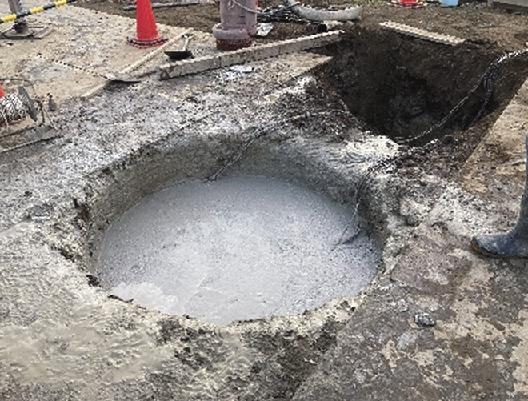Taisei Corporation: Application of environment-friendly concrete to cast-in-place RC pile construction method, acquisition of technical examination certification

Pile construction status of the demonstration experiment (provided by Taisei Corporation)
Taisei Corporation has established a quality and construction management method that can apply environment-friendly concrete mixed with 60 to 70% blast furnace slag to its own cast-in-place RC pile construction method "T-EAGLE (Eagle) pile construction method". Acquired construction technology examination certificate.
Equivalent to JIS Class C blast furnace cement, it can reduce carbon dioxide (CO2) emissions by up to 60% compared to RC piles made with ordinary Portland cement.
In the general cast-in-place concrete pile construction method, there is no case of obtaining technical certification regarding the application of concrete using blast furnace cement type C. Until now, it was necessary to verify the quality of each building individually, such as checking the concrete strength.
The environment-friendly concrete applied by the company is "T-e Concrete/Building Standards Act compliant". The replacement rate of portland cement with ground granulated blast furnace slag is 60-70%, which is equivalent to class C blast furnace cement.
While Blast Furnace Cement Type C has a low heat of hydration and excellent chemical resistance, it also has technical issues such as a tendency to decrease fluidity. The company has adjusted the additives with attention to fluidity and fluidity retention. As a result of a field demonstration experiment of driving a full-scale pile, it was confirmed that the strength and durability are equal to or greater than those of cast-in-place piles made of ordinary Portland cement.
In 2019, the "T-EAGLE Pile Construction Method", which received technical certification as an RC piling construction method that can use environmentally friendly concrete, was jointly developed with System Measurement (Sumida-ku, Tokyo, Chairman Yutaka Kubo). By providing two bump-shaped enlarged diameter parts on the pile, the bearing pressure area against the supporting ground is increased and the vertical bearing capacity is increased. We will actively propose it as a basic construction method for buildings toward the realization of a decarbonized society.






